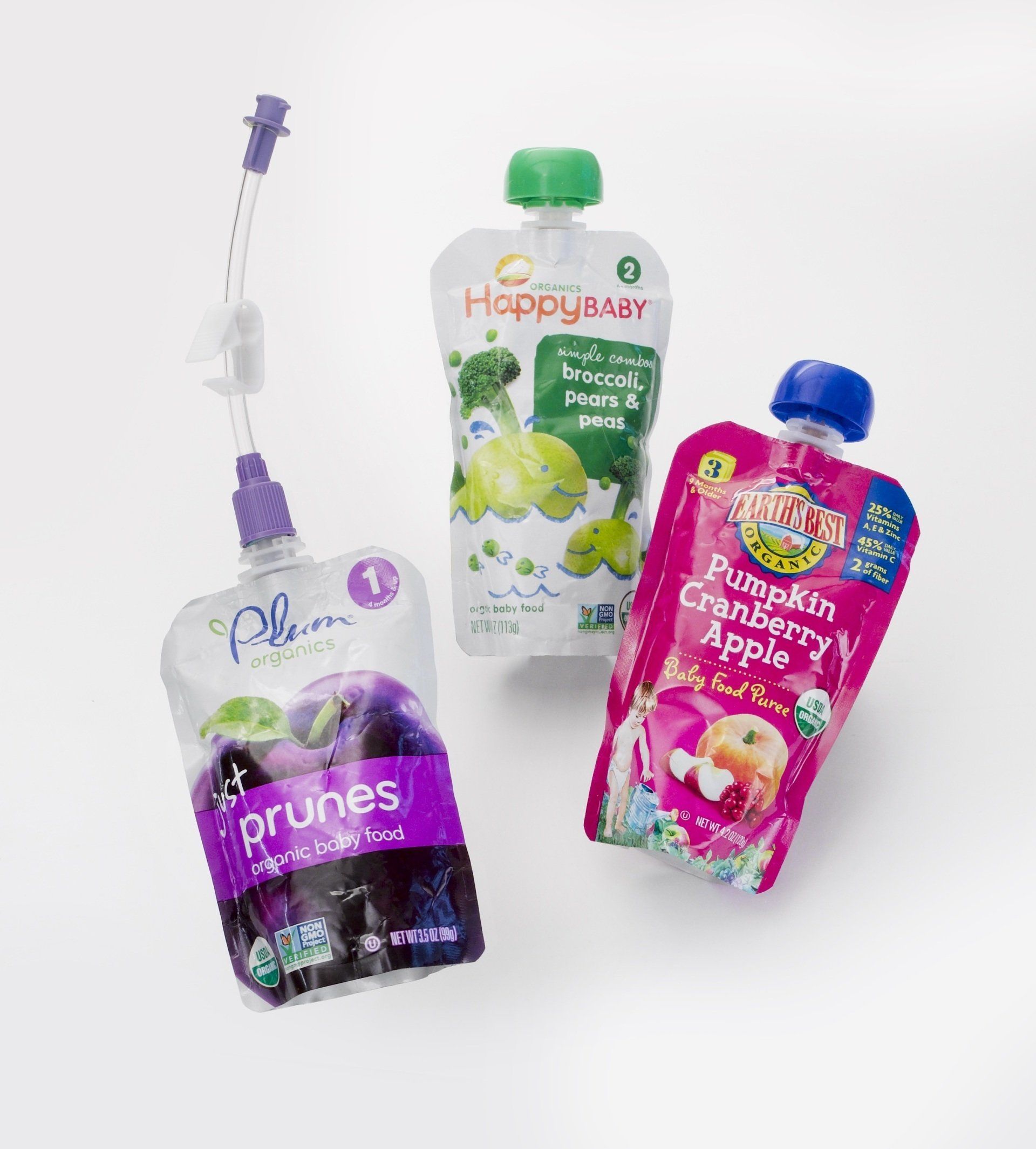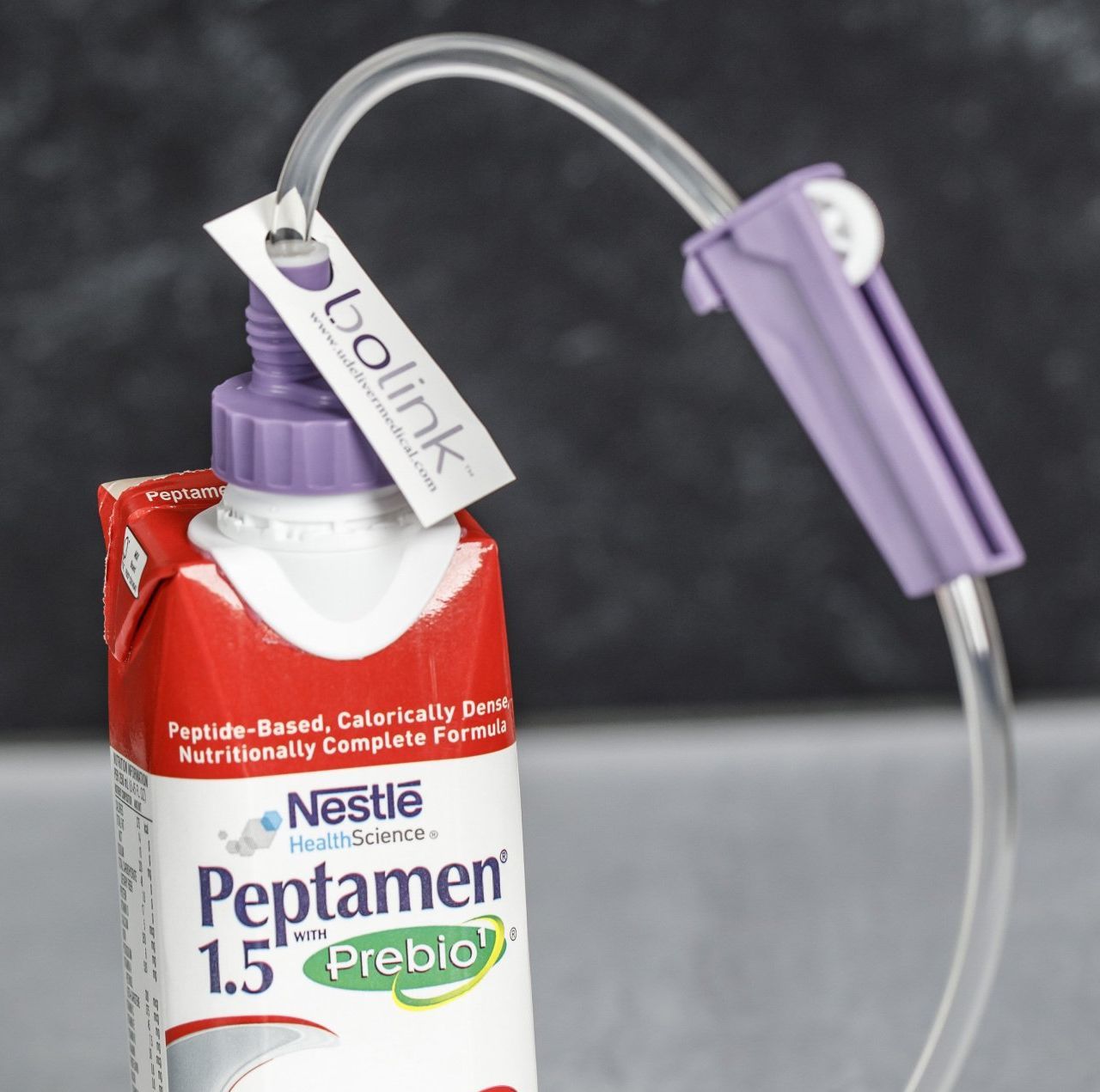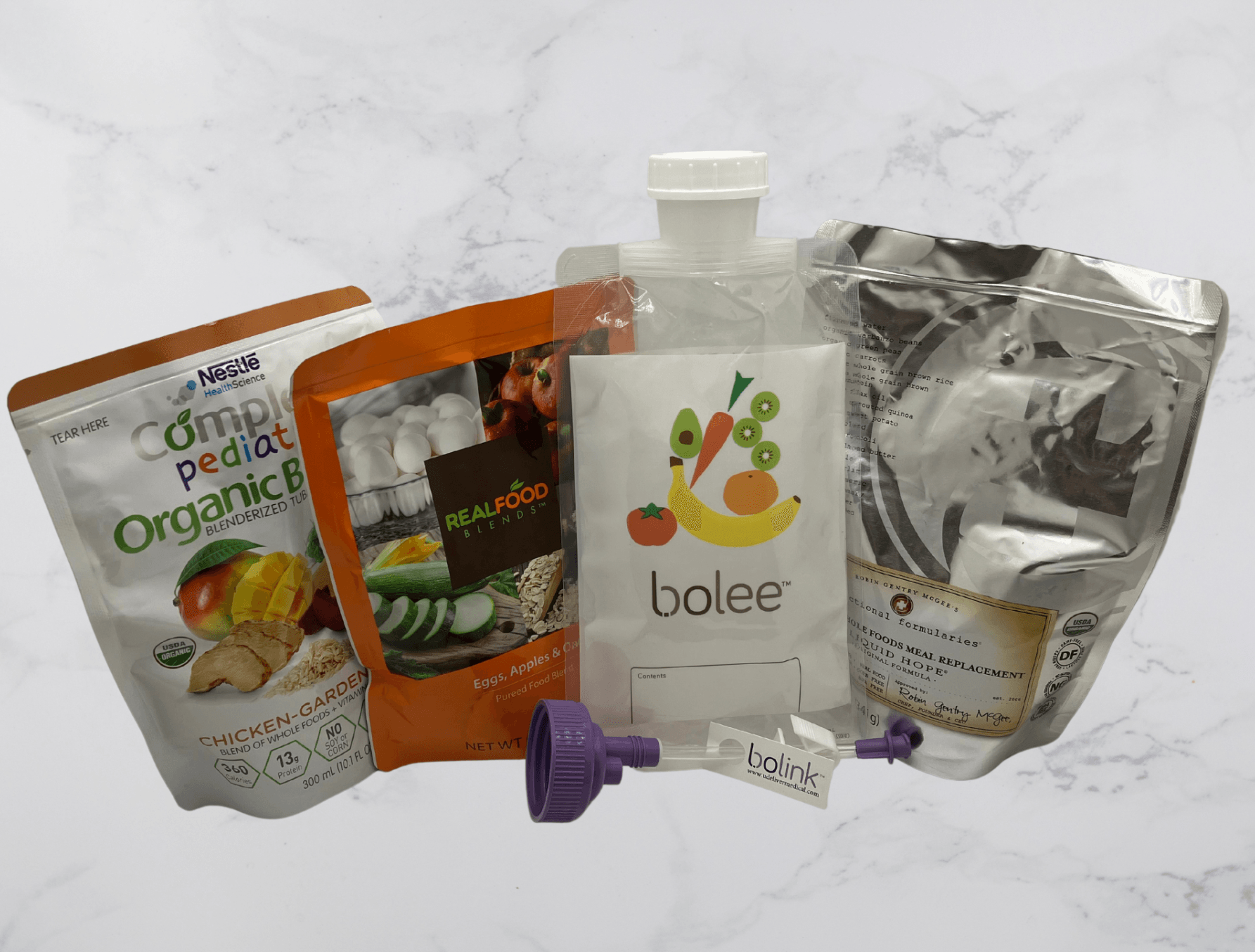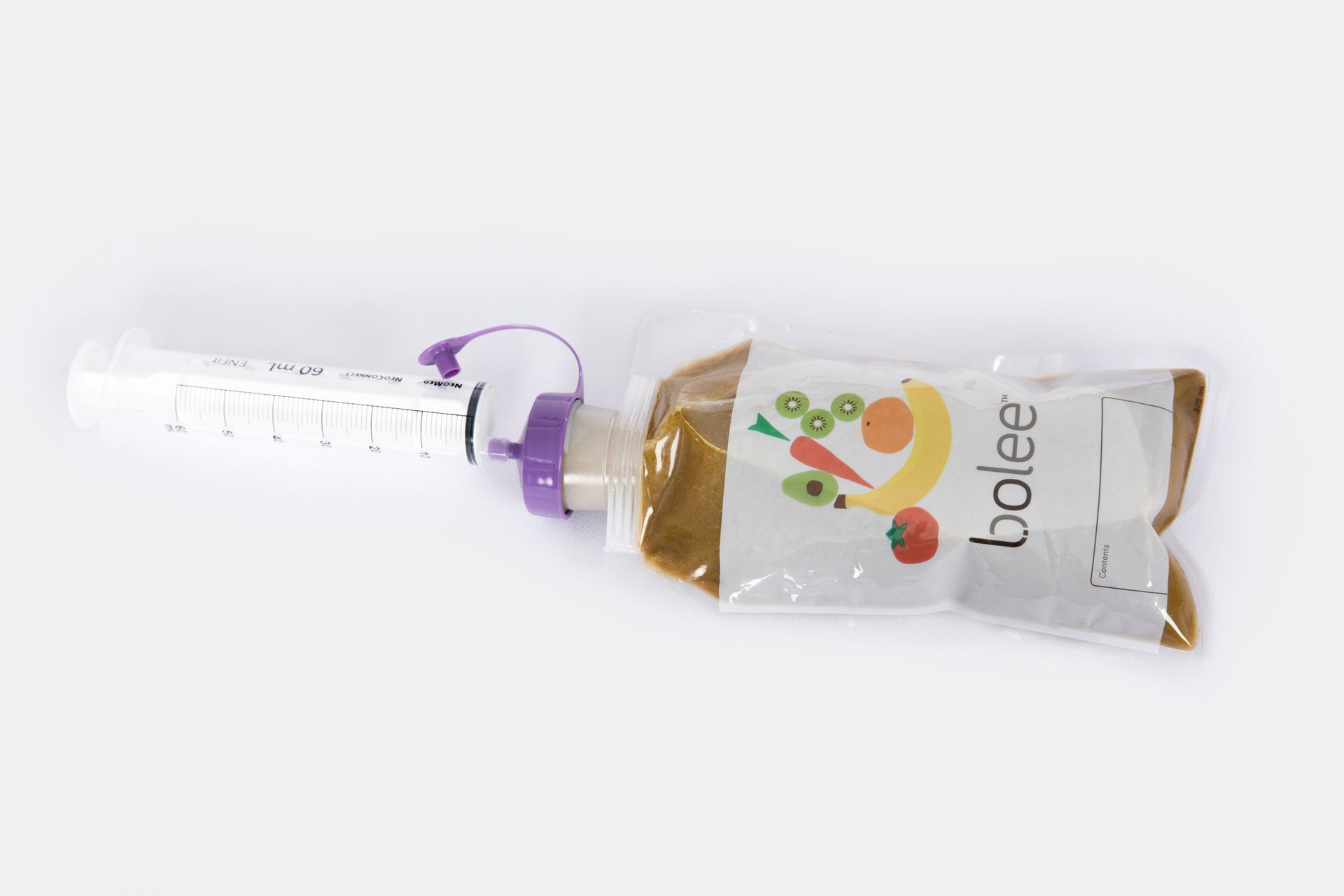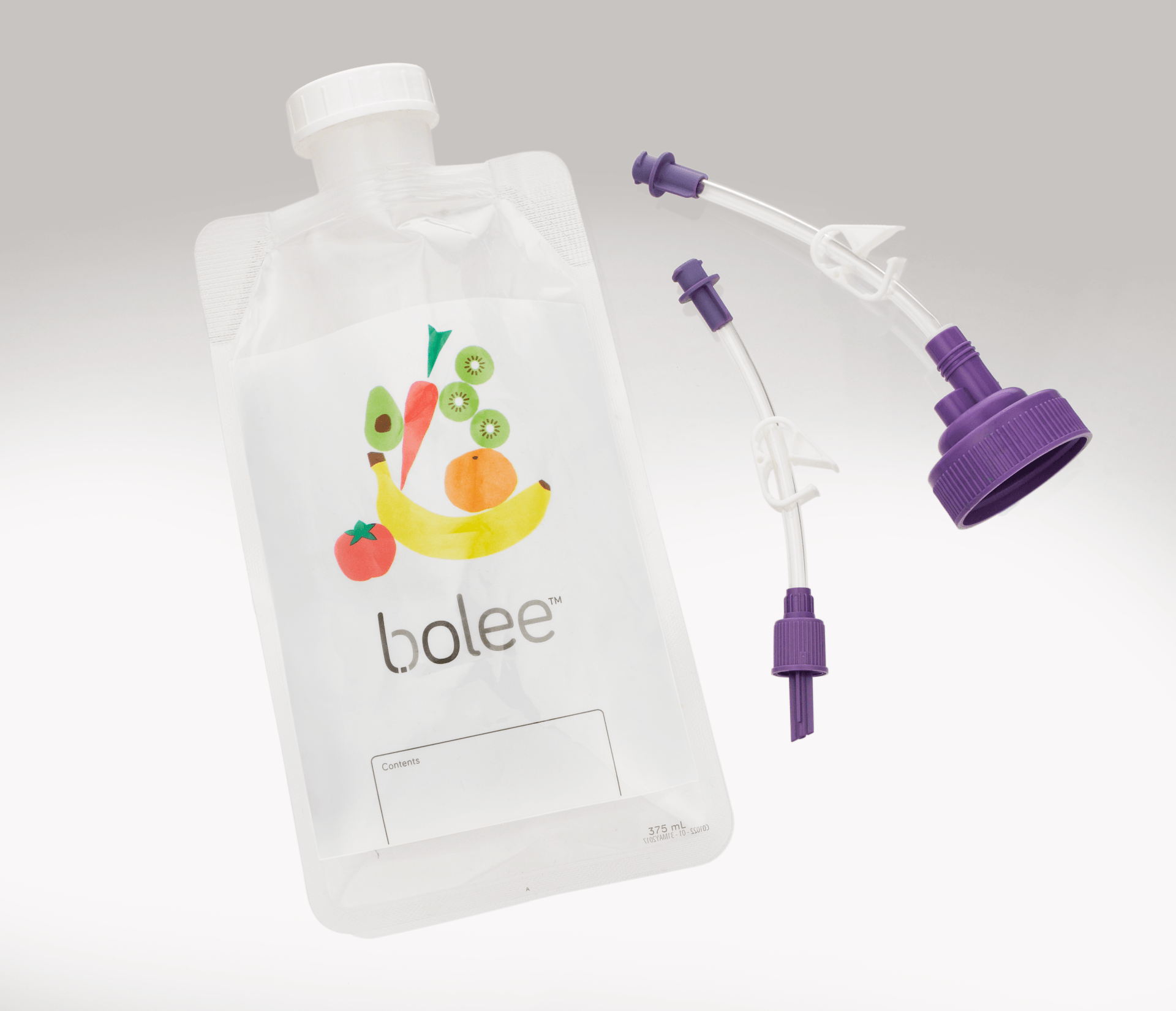Making Blenderized Tube Feeding that Flows
Taking Control
Over the last 5 years, more and more people have made the decision to make their own blenderized tube feeding nutrition using fresh vegetables, fruits, whole grains and protein. Why not tube feed what you would normally eat without a feeding tube? For most people, it is a trial and error process to develop recipes that work for them nutritionally, and then to figure out how to blend them so that they actually flow through their feeding tube.
Consistency is Critical
Creating the proper consistency is really an “art” that takes time to figure out. Is it the amount of liquid or length of time blending that gives you the right consistency – or both? For most people, finding that right consistency is all about constant tweaking and knowing it when you see it. Without the proper consistency you blend will not be able to flow using an enteral pump or it could be very difficult to deliver by bolus or gravity.
Based on some recent work by done by the Mayo Clinic and a research group at the Food and Drug Administration (FDA), here are some basic things to keep in mind as you blend for your tubie.
Thickness matters. The thinner the blend, the easier it is to deliver it.
“Chunks” matter. The smoother the blend, the less likely it is to clog your tube.
Blenders matter. The better the blender, the easier it is to create a blend that flows smoothly.
Blender time matters. The longer the blending time, the better the blend.
Fluid in the blend matters. Fluid (water or broth) content determines the thickness or thinness of the blend but can also dilute the nutritional value of your recipe – don’t overlook this key aspect.
Before we talk about the processing of the blend, it is important to emphasize nutritional content. The nutritional content should be first and foremost in your blend. You must have the right mix of fat, carbohydrates and protein as well as fluid to maintain your health.
There are many online resources with great information, but to ensure that your blend is nutritionally complete you should work with a qualified nutritionist who understands your circumstances. A registered dietitian who supports homemade tube feeding nutrition can be your best friend.
Key Parts of the Blending Process
The blender: The range of blenders available goes from low power/low cost products, like an Oster Blender which you can find in most every kitchen, to a mid-range product with more power at slightly higher price, like a Ninja, to a high power, industrial strength/high cost product like a Vitamix or Blendtec. Get a Blendtec or Vitamix if you can afford it. The time spent blending will be much more efficient using a high speed/high power blender. Both companies offer medical assistance so check out their websites for more details.
Blending time: Most people blend from 1 to 3 minutes. Typically, the longer the blend the finer the particles in the blend. Fine particles mean less clogging and better flow rates. Blending more than 3 minutes doesn’t make much of a difference.
Fluid or water content: Fluid or water is very important for health, and is something to discuss with your healthcare provider. It determines the thinness or thickness of the blend. But it is also critical for the processing the ingredients, because it impacts the efficiency of your blender. The right amount of water allows the blender to chop and pulverize the ingredients effectively. If there is too little fluid in the blend, the ingredients won’t turn over in the container, meaning that the blades won’t chop them up as fine as possible. If calories are a concern you can use a liquid other than water to add extra calories as well as vitamins and minerals.
Storage
After you make your blend you can store it in a variety of containers, but the
Bolee Bag from the
bFed System was specifically designed for this purpose. The Bolee Bag holds almost 13 ounces of liquid, which should be enough for a meal. When it comes time to eat, attach the Bole Bag to your feeding tube or extension set (a straight bolus extension set is best) with the Bolink Large Cap, sit back, and squeeze to create the flow you want.
Give it a try
It’s not an easy decision to make your own blenderized tube feeding nutrition and it should be discussed with your healthcare team first, but most people will agree that it is the best decision for long-term tube feeders.
If you decide to blend your own, do your research first (there are a lot of resources on Facebook and Pinterest) and be prepared to make mistakes – it’s okay.
The post Making Blenderized Tube Feeding that Flows appeared first on bFed System.





